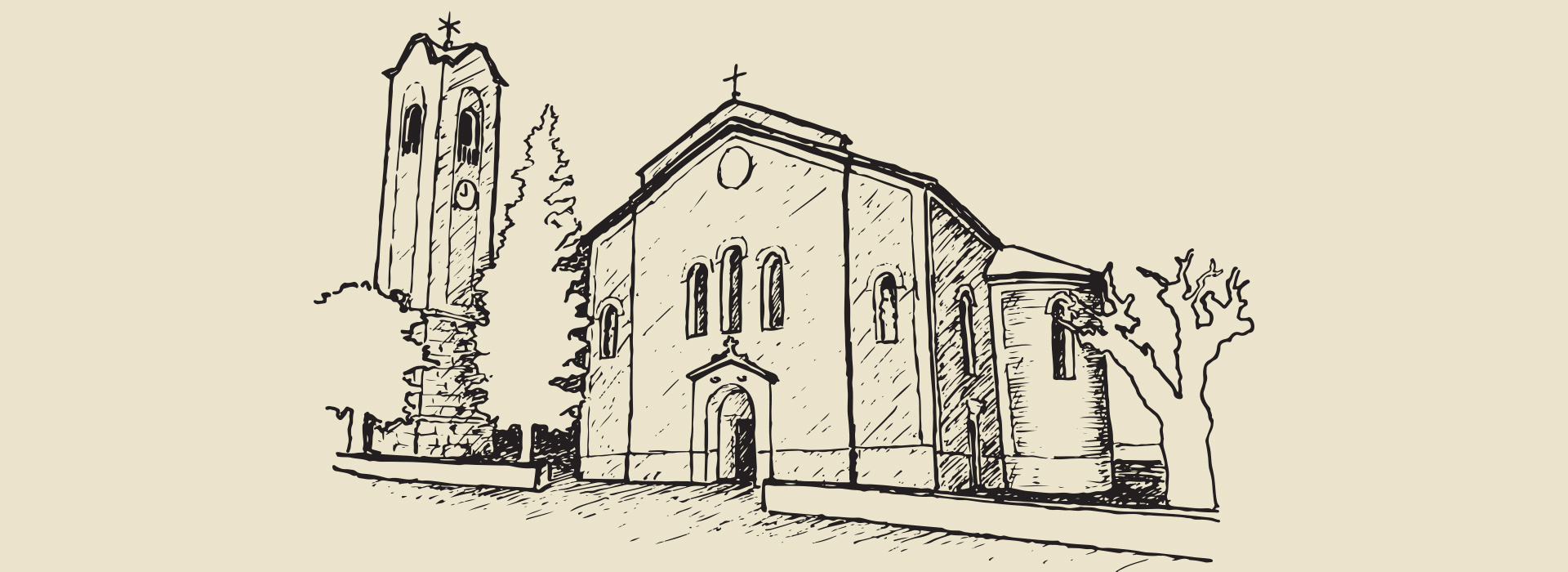The Parish Church of St Apollinaris

Though the parish church of St Apollinaris is located in the village of Bogovići, its history has roots in another place. It was first mentioned as a parish church circa 1500 in a centrally located settlement in the Dubašnica field. A bell tower with Gothic capitals on biphoras was built next to it in 1618. The village was ravaged by malaria, so the inhabitants moved to Bogovići, which was, at the time, settled and home to the Church of Our Lady of Carmel built in 1644. The old parish Church of St Apollinaris was disassembled in the 19th century. The parts and construction materials were transported to Bogovići in oxcarts where a new church was erected in place of the existing one. The cemetery and original bell tower were left in the Dubašnica field as a memorial of past times. A new one was erected in Bogovići, and the Church was consecrated in 1857.
The parish church, measuring 32m in length (including the presbytery), 20m in width and 18m in height, is a three-nave building with a semi-circular presbytery and side chapels. The three naves are of the same height and are supported by four massive square columns. The main nave features a cross vault while the lateral naves are vaulted with barrel vaults. The three altars were pre-existing.
A massive Baroque marble altar of St Apollinaris dating back to the 17th century served as the main altar in the earlier church in the Dubašnica field. The altar screen from 1862 by the Viennese painter W. Schoffman features the Madonna with Saint Apollonia holding a palm branch (a symbol of martyrdom), the pliers which were used to torture her, and a book as a symbol of wisdom and the preaching of faith. St Apollinaris was painted behind her in a bishop robe with a mitre and a crosier.
An anecdote testifies to a misunderstanding between the Viennese painter and the client. Thinking that the church and altar were dedicated to Saint Apollonia, he painted her in the foreground to the right of the Madonna. It was too late to correct the error by the time it was discovered, so the image of Saint Apollinaris was painted in the corner. The right side of the painting depicts Saint Benedict with his white beard dressed in his black Benedictine habit. Saint George in knight’s armour is behind him.
The side chapel altars, the altar of Our Lady of the Rosary built in 1709 and Our Lady of Carmel from 1644, were brought from previous churches. The marble statues at the altar of Our Lady of Carmel are considered the finest sculptures in the Church of St Apollinaris. On the left is the statue of Saint Teresa of Avila, and on the right that of Saint John of the Cross. The works of art in the church were created by both Viennese and Croatian painters and sculptors. The new stained glass window was created to mark the 150th anniversary of this parish church, and depicts all existing chapels in Dubašnica and their patrons.
The church’s bell tower, completed in 1856, is the town’s landmark. It was modelled after the preserved old bell tower in the Dubašnica field, and measures 4m x 4m with a height of 28 m and two wall clocks.

